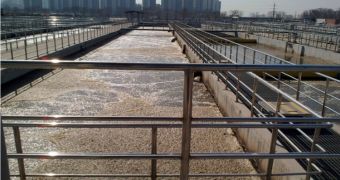Researchers with Rice University, in Houston, Texas, announce the discovery of extremely resistant bacteria at two wastewater treatment facilities in China. These so-called superbugs cannot be killed by conventional antibiotics or clean-up processes, and can reach the general population at any time.
Antibiotic-resistant bacteria have started becoming a real problem globally a few years ago. Such organisms as methicillin-resistant Staphylococcus aureus (MRSA), Pseudomonas aeruginosa, Clostridium difficile, Salmonella and Escherichia coli can thrive in hospital environments.
What makes the situation even worse is the fact that neither antibiotics, nor sterilization can kill these extremely dangerous microorganisms. Similar bugs were found in China. At both treatment facilities, the procedures used were not enough to purify the water and kill the dangerous biological agents.
In addition to escaping purification, the superbugs were found able to escape the tanks, and breed and spread in the wild. The Rice team conducted this study together with colleagues from the Nankai University and Tianjin University, both in China.
The bacteria they identified carried versions of a multi-drug-resistant gene called New Delhi Metallo-beta-lactamase (NDM-1), which was first discovered in India around three years ago. The genetic signature of the material was discovered in sludge from the treatment plants, which were being used as fertilizers for agricultural lands nearby.
“It’s scary. There’s no antibiotic that can kill them. We only realized they exist just a little while ago when a Swedish man got infected in India, in New Delhi,” explains Pedro Alvarez, who is an environmental engineer at Rice, and the leader of the new research.
“Now, people are beginning to realize that more and more tourists trying to go to the upper waters of the Ganges River are getting these infections that cannot be treated,” he adds. The study was published in this month's issue of the journal Environmental Science and Technology Letters.
“We often think about sewage treatment plants as a way to protect us, to get rid of all of these disease-causing constituents in wastewater. But it turns out these microbes are growing. They’re eating sewage, so they proliferate. In one wastewater treatment plant, we had four to five of these superbugs coming out for every one that came in,” the investigator concludes.

 14 DAY TRIAL //
14 DAY TRIAL //